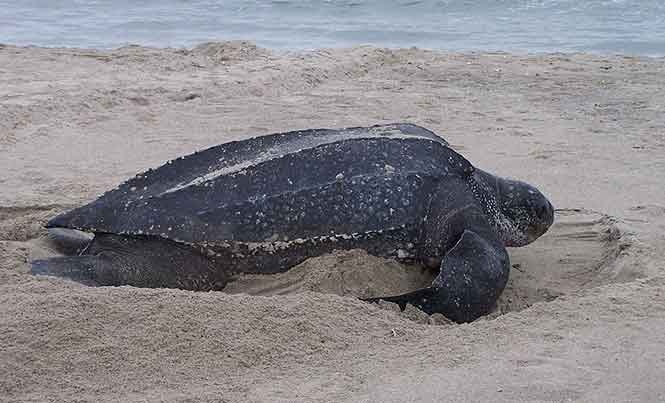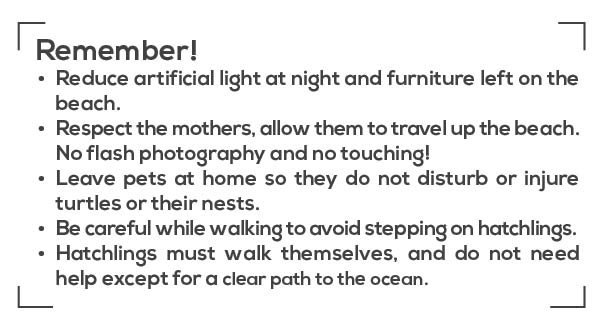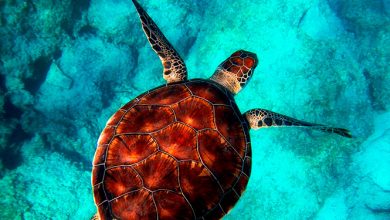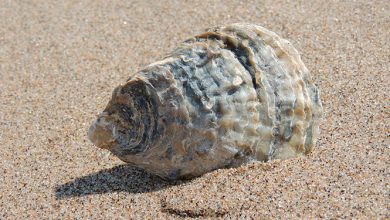Nesting season is on! Please do not disturb!
From early May through late October, female sea turtles make their way to our beaches to lay their eggs.

Find out what challenges they face when they return.
In nature, sea turtles face a lot of threats, particularly as hatchlings. But once they are adults, natural threats are reduced. These threats, however, are not the reasons sea turtle populations have declined almost to extinction. To understand what really threatens sea turtles, we must look at the actions of humans.
Harvest for consumption, the illegal shell trade, getting caught in fisheries (e.g. tuna), and plastic pollution are well-known threats. However, there are other more subtle, yet highly negative threats faced bynesting turtles and hatchlings directly related to coastal development and beach tourism.
Nowadays, nesting turtles compete with tourists, residents, and business for the use of the beaches. Nesting turtles depend on dark, quiet beaches to reproduce and lights from coastal developments discourage females from nesting. After multiple attempts to find a suitable spot, females will resort to non-suitable nesting spots which reduce their hatchlings’ survival rate. Additionally, hatchlings instinctively move towards the brightest direction, which is normally moonlight reflecting off the ocean, so lights coming from coastal buildings cause hatchlings to become disoriented, pushing them towards land.
Beach activities like driving on the beach, beach furniture, boats, and even bungalows negatively impact nesting turtles, incubating eggs, and hatchlings. For example, there is increasing documentation of nesting females becoming entrapped in beach furniture. Driving on the beach during the day can cause sand compaction above nests resulting in lower nest success.
Turtle nesting season is now in the Riviera Maya from early May to late October. It is a beautiful sight to see a large turtle coming out of the sea to nest and witnessing baby turtles make their way to the ocean can be a life changing experience. However, the massive coastal developments directly on the beach, the lights, furniture, and masses of people all have an impact on the turtles nesting.
So, let’s:
- Reduce artificial light at night and furniture left on the beach.
- Respect the mothers, allow them to travel up the beach. No flash photography and no touching!
- Leave pets at home so they do not disturb or injure turtles or their nests.
- Be careful while walking to avoid stepping on hatchlings.
- Hatchlings must walk themselves, and do not need help except for a clear path to the ocean.







